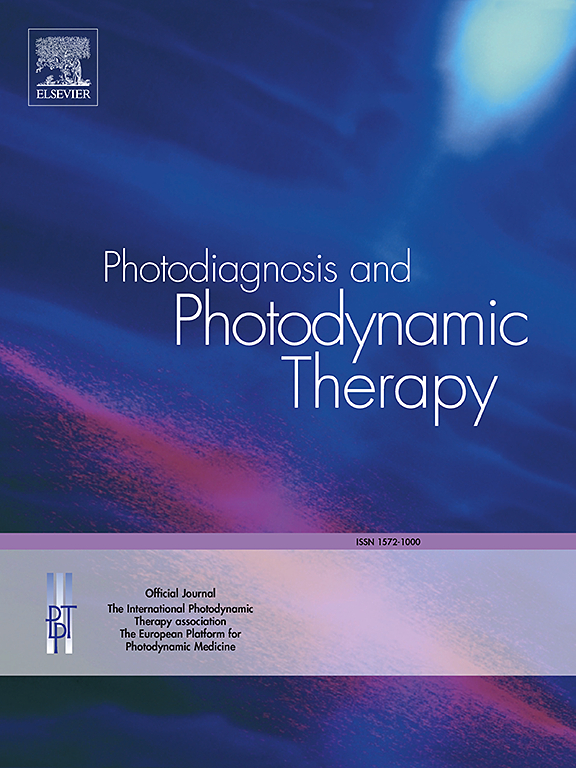Efficacy and safety of fluorescence navigation combined with 3D imaging in precise liver resection: A systematic review and meta-analysis
IF 3.1
3区 医学
Q2 ONCOLOGY
引用次数: 0
Abstract
Objective
This study aimed to evaluate the effectiveness and safety of fluorescence navigation combined with three-dimensional imaging (FN&3DI) technology in precise liver resection.
Methods
A systematic search was conducted in the PubMed, Web of Science, Embase, and Cochrane Library databases for all English-language publications on fluorescence-guided navigation combined with three-dimensional (3D) imaging technology–assisted precise liver resection, with a cutoff date of July 2024. After assessing the quality of the included studies and extracting relevant data, a meta-analysis was performed using Stata 12.0 software.
Results
A total of 6 studies involving 451 patients were included in this study, with 207 patients in the FN&3DI group and 244 patients in the conventional surgery (CS) group. The meta-analysis results showed that the FN&3DI group exhibited significantly lower values than the CS group in terms of intraoperative blood loss [mean difference (MD) = –97.90, 95 % confidence intervals (CI) = –151.15 to –44.66, P = 0.000], intraoperative blood transfusion rates [odds ratios (OR) = 2.96, 95 % CI = 1.71–5.10, P = 0.000], hospital stay (MD = –0.91, 95 % CI = –1.78 to –0.04, P = 0.041), and overall postoperative complications (OR = 1.68, 95 % CI = 1.11 to 2.53, P = 0.014). However, the FN&3DI group exhibited significantly longer surgery time (MD = 57.36, 95 % CI = 13.31–101.40, P = 0.011), but no statistically significant difference was noted in conversion rate, R0 resection margins, and postoperative recurrence between the two groups.
Conclusion
Fluorescence navigation combined with 3D imaging technology is safe and feasible for guiding precise liver resection.
荧光导航联合三维成像在精确肝切除术中的疗效和安全性:一项系统综述和荟萃分析。
目的:评价荧光导航联合三维成像(FN&3DI)技术在肝脏精密切除术中的有效性和安全性。方法:系统检索PubMed、Web of Science、Embase和Cochrane Library数据库中关于荧光引导导航结合三维成像技术辅助精确肝脏切除术的所有英文出版物,截止日期为2024年9月。在评估纳入研究的质量并提取相关数据后,使用Stata 12.0软件进行meta分析。结果:本研究共纳入6项研究,共纳入451例患者,其中FN&3DI组207例,常规手术(CS)组244例。荟萃分析结果表明FN&3DI组表现出显著值低于c组在术中失血(平均差(MD) = -97.90,95%可信区间(CI) = -151.15至-44.66,P = 0.000],术中输血率(优势比(或) = 2.96,95% CI = 1.71 - -5.10,P = 0.000),住院(MD = -0.91,95% CI = -1.78到-0.04,P = 0.041),和整体术后并发症(MD = -0.91,95% CI = -1.78到-0.04,P = 0.041)。FN&3DI组手术时间明显长于前者(MD = 57.36,95% CI = 13.31-101.40,P = 0.011),但两组在转换率、R0切除边缘、术后复发率方面差异无统计学意义。结论:荧光导航结合三维成像技术指导肝脏精确切除安全可行。
本文章由计算机程序翻译,如有差异,请以英文原文为准。
求助全文
约1分钟内获得全文
求助全文
来源期刊

Photodiagnosis and Photodynamic Therapy
ONCOLOGY-
CiteScore
5.80
自引率
24.20%
发文量
509
审稿时长
50 days
期刊介绍:
Photodiagnosis and Photodynamic Therapy is an international journal for the dissemination of scientific knowledge and clinical developments of Photodiagnosis and Photodynamic Therapy in all medical specialties. The journal publishes original articles, review articles, case presentations, "how-to-do-it" articles, Letters to the Editor, short communications and relevant images with short descriptions. All submitted material is subject to a strict peer-review process.
 求助内容:
求助内容: 应助结果提醒方式:
应助结果提醒方式:


